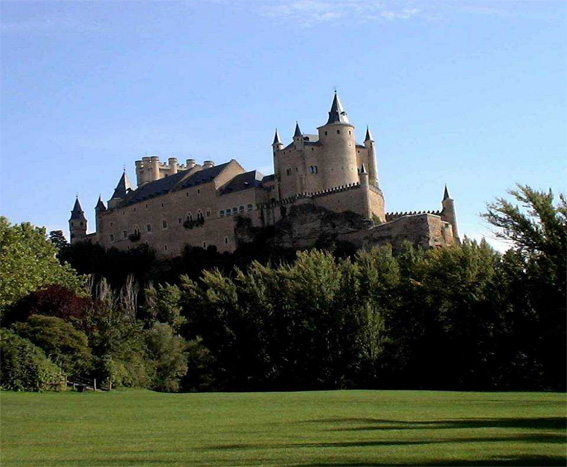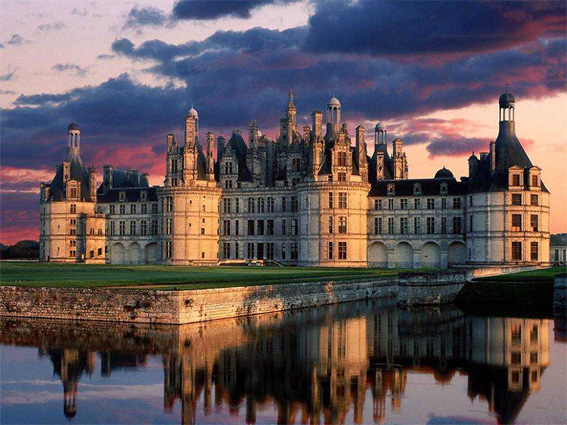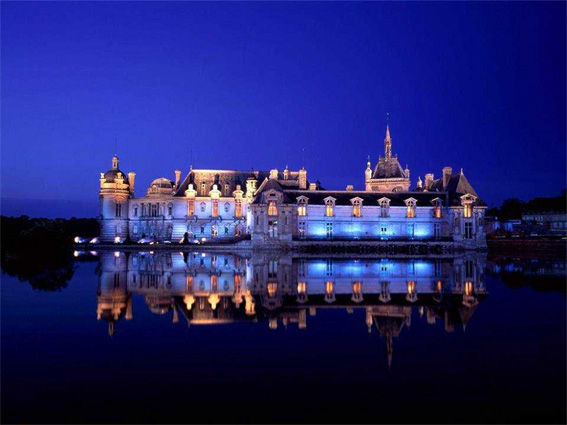| 神游歐洲(欧洲城堡6) |
| 送交者: 崑崙山上一棵草 2009年09月03日20:21:01 于 [摄友部落] 发送悄悄话 |
|
喜歡旅游﹐喜歡照相﹐可是缺錢少閑﹐哪裡也去不了﹐只能每天悶頭幹活掙點兒柴米
The Alcázar of Segovia is a stone fortification, located in the old city of Segovia, Spain. Rising out on a rocky crag above the confluence of the rivers Eresma and Clamores near the Guadarrama mountains, it is one of the most distinctive castle-palaces in Spain by virtue of its shape - like the bow of a ship. The Alcázar was originally built as a fortress but has served as a royal palace, a state prison, a Royal Artillery College and a military academy since then. The Alcázar of Segovia, like many fortifications in Spain, started off as an Arab fort. The first reference to this particular Alcázar was in 1120, around 32 years after the city of Segovia returned to Christian hands (during the time when Alfonso VI of Castile reconquered lands to the south of the Duero river down to Toledo and beyond). However, archaeological evidence suggests that the site of this Alcázar was once used in Roman times as a fortification. This theory is further substantiated by the presence of Segovia's famous Roman Aqueduct.
Belém Tower is a fortified tower located in the Belém district of Lisbon, Portugal. The Belém Tower was built both as a ceremonial gateway to Lisbon and as part of a defensive system at the entrance to the Tagus river. The system was initiated by King John II (1455-1495), who built the Fortress of Cascais and the Fortress of São Sebastião of Caparica. The shore of Belém had been protected by a ship, the Grande Nau, but it was replaced by the Tower of Belém during the last five years of the reign of King Manuel I. It was dedicated to the patron saint of Lisbon, St Vincent. The tower was constructed, between 1515 and 1521, by the military architect, Francisco de Arruda, who had already built several fortresses in Portuguese territories in Morocco. The influence of Moorish architecture is manifest in the delicate decorations, the arched windows, the balconies, and the ribbed cupolas of the watchtowers. Diogo de Boitaca, the first architect of the nearby Monastery of the Jerónimos, probably also participated in decorating the building. The machicolation and the battlements are decorated with the rich sculptural ornamentation of the Manueline style.
Egeskov Castle is located in the south of the island of Funen, Denmark. The castle is Europe's best preserved Renaissance water castle. Egeskov's history dates to the 14th century. The castle structure was erected by Frands Brockenhuus in 1554. Due to the troubles caused by the civil war known as the Count's Feud, general civil unrest, and a civil war introducing the Protestant Reformation, most Danish noblemen built their homes as fortifications. The castle is constructed on oaken piles and located in a small lake with a maximum depth of 5meters (16ft). Originally, the only access was by means of a drawbridge. According to legend, it took an entire forest of oak trees to build the foundation, hence the name Egeskov (“oak forest”).
The royal Château de Chambord at Chambord, Loir-et-Cher, France is one of the most recognizable châteaux in the world because of its very distinct French Renaissance architecture that blends traditional French medieval forms with classical Italian structures. It was constructed by King François I in part to be near to his mistress the Comtesse de Thoury, Claude Rohan, wife of Julien de Clermont, a member of a very important family of France, whose domaine the château de Muides was adjacent. Her arms figure in the carved decor of the château.
The Château de Chantilly is a historic château located in the town of Chantilly, France. It comprises two attached buildings; the Grand Château, destroyed during the French Revolution and rebuilt in the 1870s, and the Petit Château which was built around 1560 for Anne de Montmorency. The estate began in 1484 when Chantilly came into the possession of the Montmorency family. The first mansion (no longer extant, now replaced by the Grand Château) was built in 1528–1531 for the Constable Anne de Montmorency by Pierre Chambiges. The Petit Château was also built for him, around 1560, and probably by Jean Bullant. In 1632, after the death of Henri II, it passed to the Grand Condé who inherited it through his mother, a Montmorency.
|
|
|
|
|
 |
 |
| 实用资讯 | |








